Homeless SLO residents say property goes missing after camp cleanups. What’s happening?
About four months ago, Debbie Marino heard movement outside of her tent in an encampment for homeless people near Los Osos Valley Road and Highway 101 in San Luis Obispo.
Police officers, social workers and contractors had arrived at around 7:30 a.m. to clean up the camp.
“What they tell you when they hit your doorstep in the morning is (that you have) 10 minutes,” said Marino, who had missed seeing notices about the cleanup when she arrived at the encampment the previous night. “If you’re not out in 10 minutes, everything here is going, whether you can carry it or not.”
Fearing she’d be arrested if she stayed with her stuff, Marino left — and lost almost all her possessions, including clothing, food and blankets.
Marino has been homeless off and on for the past six years, spending most of that time living in San Luis Obispo County.
Four times in the past year, including twice in the past four months, Marino said she has had most or all of her possessions taken or thrown away by city contractors, the San Luis Obispo Police Department, the San Luis Obispo Ranger Service and workers from the San Luis Obispo Department of Public Works, Caltrans and California Work Opportunity and Responsibility to Kids.
When that happens, she said, “You grab what is most important. Anything and everything that is most important, you carry.”
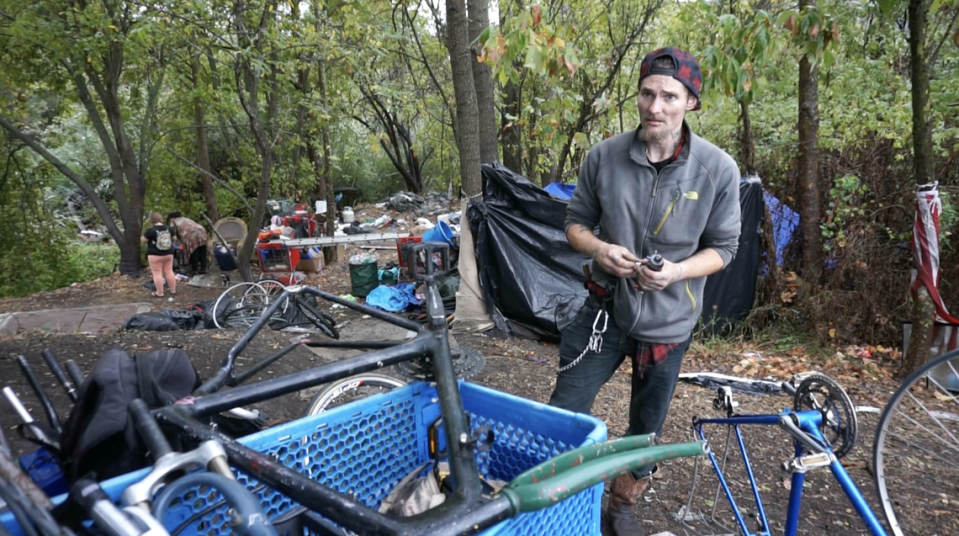
How does the city conduct encampment cleanups?
San Luis Obispo city manager Derek Johnson said the city’s approach to cleaning up encampments for homeless community members falls under its Compassionate Assistance, Mitigation and Prevention Standards.
Under CAMP standards, encampments are considered unpermitted camping on public property, and are sorted into three categories.
Level 1, the most severe category, involves encampments that require immediate attention and clearing due to public health and safety risks.
Level 2 encampments pose “significant, though not immediate” health and safety hazards and require a 72-hour notice ahead of a cleanup, while Level 3 encampments require low-level trash mitigation.
Johnson said the city is continuously monitoring the size and makeup of encampments in areas such as the Bob Jones Trail, which is located near SLO County’s largest fuel depot on Prado Road, and conducts “selective and purposeful” sweeps of the trail to keep fire risks down.
When the city looks to clean up an encampment, city attorney Christine Dietrick said, it typically reaches out with its Mobile Crisis Unit and Community Action Team in an effort to “give folks as much advance notice as possible.”
Sometimes, this process includes posting notices around an encampment, but giving residents 10-minute notices is not the city’s policy, Dietrick said.
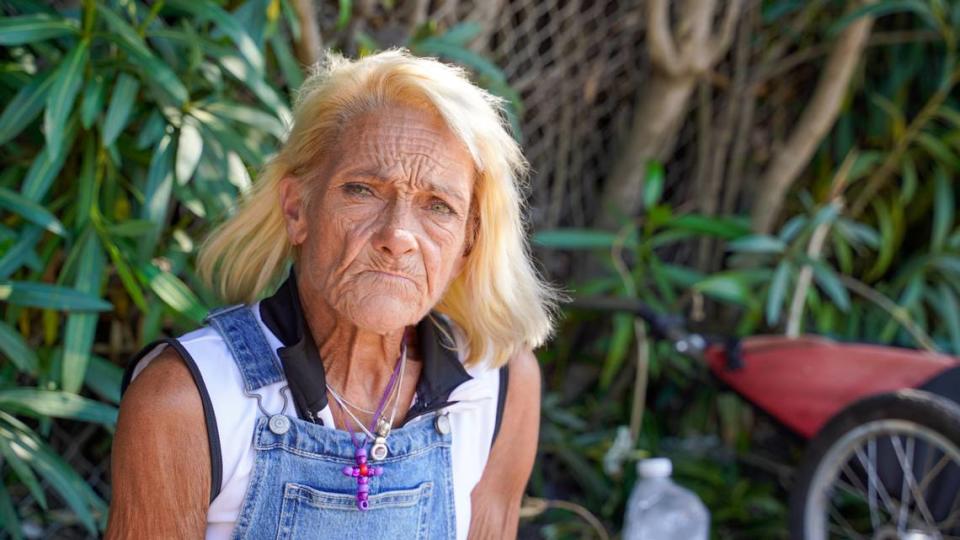
What happens to homeless residents’ personal property?
What the city does with personal property takes from encampments ultimately comes down to whether the items are attended or unattended, according to CAMP standards.
According to CAMP standards, when encampment inhabitants are present, items are considered attended.
When the property’s owner is away, but items show “objective signs of ownership and ongoing use” such as visible sleeping implements, orderly stored items, cleanliness or being bundled together or tied to a post, they are considered unattended when the owner is not present, according to CAMP standards.
When the owner has indicated they will return to the property, or a third party has indicated the owner will return, the items are also considered unattended.
When it’s time for a cleanup to start, Dietrick said the city does its best to sort out trash, debris and waste from unattended possessions, which are rounded up and sent to a city holding facility for a maximum of 90 days.
“There are circumstances for sure where we’re not sorting through everything that’s been left by somebody that we’ve been in contact with for two weeks, because the communication has been on an ongoing basis,” Dietrick said. “You need to tell us what you want stored.”
Homeless residents are instructed to make an itemized list of the possessions they would like to be stored, which the individual can later retrieve at a designated location, such as 40 Prado Homeless Services center, Johnson said.
Items stored longer than 90 days are disposed of by the city, Johnson said.
People who are unwilling to leave encampments behind may be cited by the San Luis Obispo Police Department, or, under the “most extreme circumstances,” are arrested, issued a citation and released, according to assistant city manager Whitney McDonald.
Between January 1, 2023, and September 28, 2023, the city completed cleanups at 167 sites, McDonald wrote in an email.
Between Oct. 1, 2022, and Sept. 28, the city conducted 179 cleanups, McDonald said.
Over the past year, the city of San Luis Obispo has issued 56 property receipts — 33 by the Ranger Service and 23 from the Department of Public Works, according to the city’s receipt documentation.
However, roughly two-thirds of all receipt claims ended in the stored property being destroyed, according to the city’s receipts.
Some homeless residents say their property often goes missing for good, arguing that contractors or city government employees dispose of essential possessions.
“We lead with compassion,” Johnson told The Tribune. “That’s not our posture to get out there and harass individuals who are down on their luck. We’re trying to help them into services.”
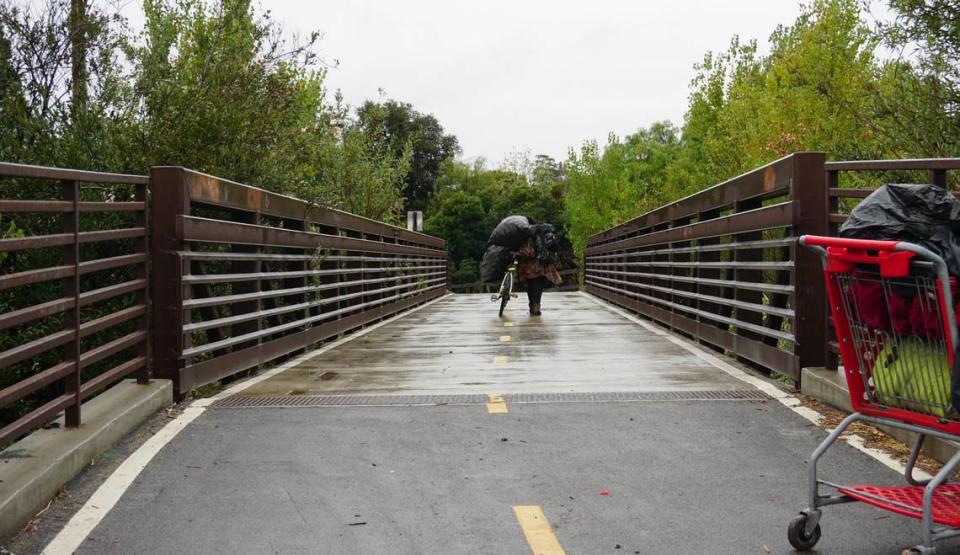
Homeless residents: City, contractors mistake possessions for trash
Sammy Clanin has been an unhoused resident of San Luis Obispo since 2003.
In 2017, Clanin said, a doctor prescribed him a “wagon” of medication and tools to help him mitigate his Type 2 diabetes, including needles, insulin, cotton swabs and glucose test strips.
However, Clanin said his medical equipment was taken during a city cleanup of the encampment where he was staying.
He said it was eventually thrown out by junk removal workers from 2Mexicans.com Junk Removal Services, which the city contracts to help clean out homeless encampments.
“(The city) had a policy at the time to destroy all medical stuff they find,” Clanin told the Tribune, “so they took all my insulin, all my needles and everything and left me as a Type 2 diabetic out here to fend for myself.”
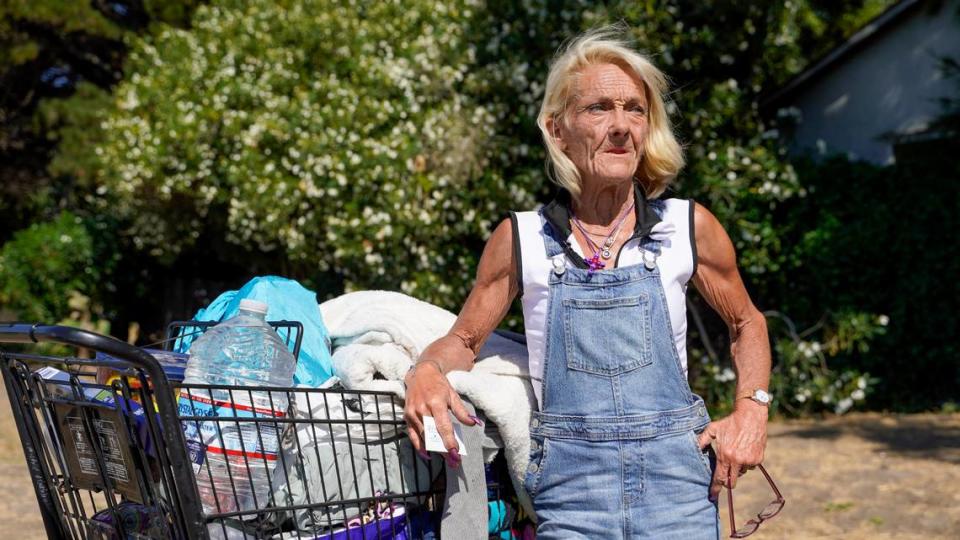
Marino said she’s also lost essential possessions during encampment cleanouts.
About two months ago, Marino said she was camping in the green space behind Megan’s Organic Market in San Luis Obispo when she started feeling unwell.
A self-described “lifetime alcoholic,” Marino has lived with a terminal cancer diagnosis the past few years.
A city ranger came to her campsite, and told her to get help at the hospital, promising to personally store her belongings at the city’s storage site while she was being treated, Marino said.
Marino’s stay at the hospital lasted four days.
When she came to claim her possessions, Marino said, she was shocked by how few of her belongings had been stored.
“The only thing that they had from my camp was two small boxes of my clothes,” Marino said. “Everything else was gone, right down to the shoes.”
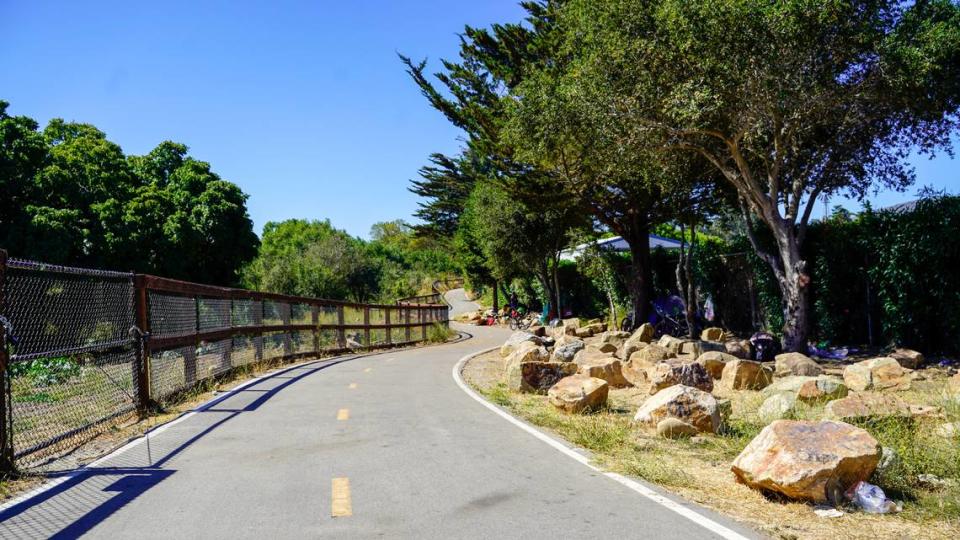
According to Clanin, several local homeless people claim they’ve seen their personal possessions in the hands of other homeless residents weeks after they were confiscated from encampments indicating that property was sold or redistributed.
Marino said she’s seen other homeless residents wearing pieces of clothing she lost during encampment cleanups.
Johnson said items removed during cleanups are not being resold.
“We have heard the allegations that after items are cleaned up and removed by the city’s contractor, they are later sold, and how items that are otherwise headed to the landfill are diverted for recycling or reuse,” Johnson wrote in an email to The Tribune.
“When stored items are not claimed within 90 days or do not require storage, we always try to divert them from becoming landfill material,” by sorting out discarded items into trash and recycling, Johnson said. “To date, the police department has not received any criminal police reports from victims claiming their personal property was stolen by any contractors working for the city pursuant to camp clean-up efforts.”
Where can homeless people store their possessions?
Johnson said homeless community members looking to keep their property safe should store possessions at 40 Prado Homeless Services Center in San Luis Obispo, which has the capacity to hold a limited amount of items.
Dietrick said homeless individuals should keep essential items such as personal documents, medications and cell phones with them at all times to avoid losing them in cleanups.
The city is not a social service provider, she said, and cannot be expected to hold every confiscated item irrespective of size or type, particularly if the items represent a threat to public health and safety.
Items in encampments may be unsanitary, present a fire risk or occupy too much space, making areas unpassable, Dietrick said.
“I’ve heard the use of the term ‘sweeps,’ and it’s a term that we reject, for a couple of reasons,” Dietrick said. “There is not the capacity to sweep the city, so we’re doing very focused, single-location cleanups, and typically, we are doing that at a pace that tries to keep up with the proliferation of real health and safety issues.”
Homeless residents including Marino said the city’s cleanups have done more harm than good for the residents staying in encampments.
In fact, Marino said, such cleanups have kept her from making progress toward housing because she’s had to replace the items I’ve lost.
“My time is limited,” because of her health, Marino said. “The time that I have, I’d like to spend in the outdoors. It would be nice if I could put up my tent and just have a nice, relaxing afternoon.”

